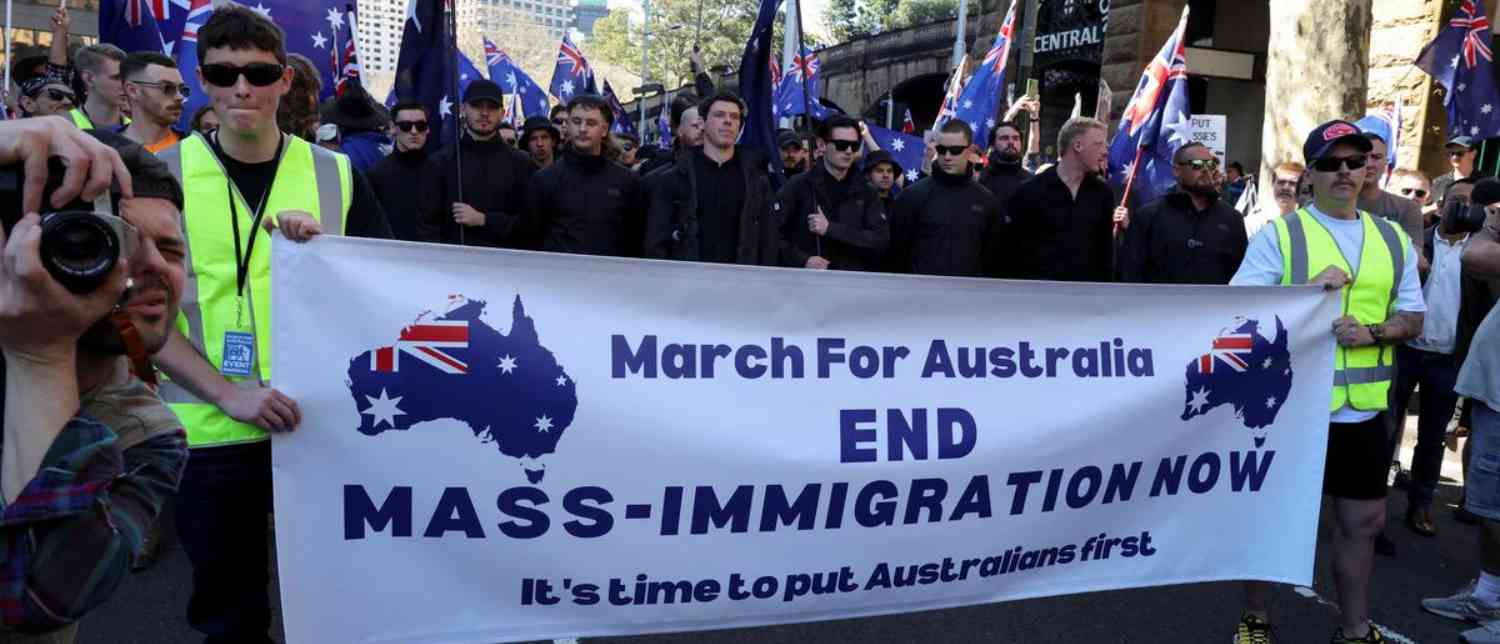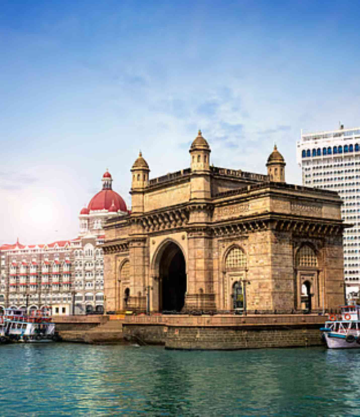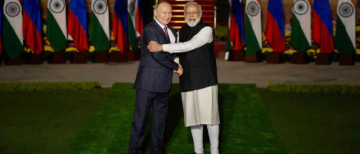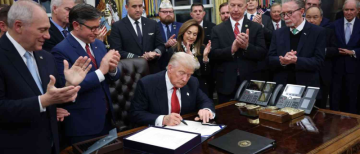Australia has recently witnessed a surge in anti-immigration protests, with Indian migrants increasingly becoming the focal point of public debate. The events have exposed deep societal tensions around migration, multiculturalism, and political discourse, drawing attention from both domestic authorities and international observers.

Violent Protests Across Major Cities
The unrest unfolded as thousands of Australians gathered under the banner of the “March for Australia” in cities including Melbourne, Sydney, Brisbane, Perth, Canberra, and Adelaide. Organised through a right-wing group’s website and social media platforms, the rallies aimed to pressure the government to end what organisers termed “mass immigration.”
In Melbourne, where approximately 5,000 demonstrators and counter-protesters convened, violent confrontations erupted multiple times. Riot squads were deployed, using pepper spray and baton rounds to separate groups. At least six arrests were made on charges including assault, according to SBS News. Sydney saw between 5,000 and 8,000 attendees, while other cities reported similarly large crowds. Authorities condemned the protests as racist, with Environment Minister Murray Watt stating the rallies were “about spreading hate and dividing our community” and promoted by neo-Nazi groups. Multicultural Affairs Minister Anne Aly described far-right activism as having “no place in modern Australia.”
Counter-protests, led by groups such as the Refugee Action Coalition, highlighted Australia’s immigrant roots. Demonstrators emphasized that, “Outside of indigenous people, almost everyone here comes from migrant backgrounds,” demonstrating widespread opposition to the far-right agenda of the March for Australia rallies.
The unrest coincided with the introduction of legislation banning Nazi salutes and the display or sale of extremist symbols—a response to a rise in anti-Semitic incidents following the escalation of the Israel-Gaza conflict in 2023.

Targeting the Indian Community
Anti-migrant flyers specifically singled out the Indian community, with slogans claiming, “More Indians in five years than Greeks and Italians in 100.” Such rhetoric prompted Indian community leaders to advise migrants to remain indoors due to safety concerns.
As of June 2023, Australia hosted 845,800 Indian-born residents, more than double the 378,480 reported in 2013. Indians are now the second-largest migrant group after Britons, representing 10.3% of the overseas-born population and 3.2% of the total population. The significant growth of the Indian diaspora has coincided with their increased visibility in skilled migration, international education, and professional sectors, making them a highly noticeable group within national debates about immigration.
Melbourne-based immigration attorney Jordan Tew of Hannan Tew Lawyers explained that the singling out of Indian migrants often reflects broader societal anxieties. “The recent protests reflect anxieties around cost of living, rental and housing pressures, and rapid change,” he said, noting that there is also a racial dimension in some cases. Tew emphasized that Indians are the largest and most visible migrant group across several visa categories, which may explain why they are often targeted in public discourse.

Economic and Social Contributions of Indian Migrants
Contrary to claims of “flooding,” Indian migrants play a crucial role in Australia’s economy and society. In the skilled migration stream, Indian nationals account for nearly 30% of all skilled visa grants—the highest share of any country. India also remains the top source country for permanent migration, with nearly 50,000 places allocated in 2023-24. Temporary skilled worker visas continue to reflect genuine labour shortages, with more than 26,000 Indians receiving such visas in the first half of 2025 alone.
Indian migrants contribute significantly across healthcare, technology, education, and business. Registered nurses, IT specialists, doctors, and teachers are among the top occupations filled by Indian professionals, addressing workforce shortages in critical sectors. Indian students, who make up 17% of international students, provide substantial support to the higher education sector, both financially and culturally.
Tew emphasized that Indian migrants are integral to Australia’s multicultural fabric. “They are not overwhelming Australia; they are helping it to thrive,” he said. Beyond their professional contributions, Indians have strengthened community life, participating in politics, sport, culture, and business, thereby enhancing Australia’s global connections and social cohesion.

Visa Policy and Scrutiny
While anti-immigrant sentiment has risen, there is no evidence of systematic discrimination against Indian migrants in visa approvals. Tighter policies primarily affect student visas, introducing requirements such as higher English language thresholds, the “genuine student” requirement, and increased application fees. This has led to higher refusal rates, but Indians remain the leading source of skilled migrants, with stable approval rates in permanent and family visa categories.
Tew advises prospective Indian students and skilled workers to thoroughly prepare their applications, noting that strong applicants continue to succeed. “Australia values Indian migrants highly—particularly in healthcare, technology, and education—and policy settings still reflect that. The key is preparation, not fear,” he said.

Political Controversy and Community Outrage
The protests and anti-immigrant rhetoric have had significant political repercussions. Australian Prime Minister Anthony Albanese called on Liberal Party Senator Jacinta Nampijinpa Price to apologise for her comments suggesting that an unsustainable number of Indians were migrating to Australia to vote for the Labor Party. The remarks caused widespread anger within the Indian community, prompting calls for accountability even from within Price’s own party.
“People in the Indian community are hurting,” Albanese told ABC, urging the senator to retract her statement and apologise. The comments also created pressure for Opposition Leader Sussan Ley to demand corrective action, although she avoided directly addressing the issue.
The rise in anti-Indian sentiment has prompted intervention at multiple levels of government. The New South Wales state government convened community meetings to address concerns, with Premier Chris Minns emphasizing that racist rhetoric and divisive claims “have no place in our state or country.” India’s Ministry of External Affairs has also engaged with Canberra over the issue, underscoring the diplomatic sensitivity of the situation.

Broader Implications for Multicultural Australia
The anti-immigration protests highlight the tension between far-right political movements and Australia’s multicultural identity. While a segment of the population expresses concern over rapid demographic changes and cost-of-living pressures, experts argue that Indian migrants are far from being a burden—they are vital contributors to the nation’s economy, education, healthcare, and society.
The events serve as a reminder of the ongoing need to balance open migration policies with social cohesion, combating racism while recognising migrants’ essential role in national development. As the Indian community continues to grow and integrate into Australian society, their economic and cultural impact is likely to become even more significant, reinforcing Australia’s position as a diverse and globally connected nation.
Racist Rhetoric or Real Concern?
Australia’s recent anti-immigration protests, particularly targeting the Indian community, have exposed underlying racial and political tensions. Despite aggressive rhetoric and isolated violence, Indian migrants remain a cornerstone of Australia’s skilled workforce, higher education sector, and multicultural fabric. Political leaders, law enforcement, and community groups have been forced to respond, highlighting the importance of fostering inclusivity, protecting minority communities, and promoting factual discourse over fear-driven narratives.
As Australia navigates these challenges, the contributions of Indian migrants—historically, economically, and socially—underscore the reality that migration, when managed responsibly, strengthens rather than threatens the nation.
With inputs from agencies
Image Source: Multiple agencies
© Copyright 2025. All Rights Reserved. Powered by Vygr Media.


























